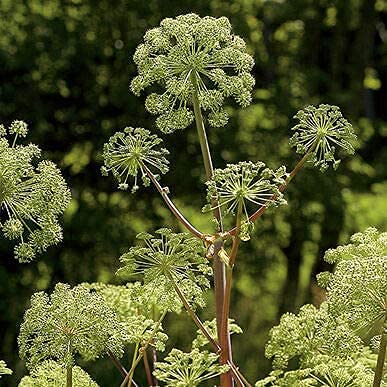Rhode Island is the smallest state in the country, but don’t let that fool you into thinking it has little to offer. One of the original U.S. colonies, Rhode Island was the last to officially become a state. Newport has over 400 miles of coastline, and the state also has many historical monuments and locations, as well as varied plant life. Forests cover three out of every five acres of the state, so that’s a lot of plant life.
This Rhode Island native plants list will help you learn more so you can select the best plants for your native landscape. Remember that this is just the beginning and there are many more native plants for you to consider. In fact, there are over 1,200 plant species native to the state.

Rhode Island Native Plants List
The following plants are native to Rhode Island and when used in your landscape, can provide many benefits to local wildlife, pollinators, and more.
1. Doll’s eyes (Actaea alba)
Also called white baneberry, doll’s eyes get their common name because of their appearance. This perennial has ribbed foliage and white clusters of fragrant flowers. They bloom throughout May and June and in the late summer, pea-sized fruits develop.
The berries are poisonous and should not be eaten.
Doll’s eyes do best in full sun to medium shade and they like moist to mesic soil with lots of loamy organic matter. These flowers will make a very unique addition to your garden or landscape.
2. Purple-stemmed angelica (Angelica atropurpurea)
Purple-stemmed angelica is an herb perennial that grows from 6-12 feet tall. It blooms white flowers that attract butterflies to your garden. It likes full sun to part shade and moist to wet soil conditions. The common name comes from its purple stems and it’s actually a part of the carrot family. It’s fairly easy to care for once established.
3. Red columbine (Aquilegia canadensis)
The bold and beautiful red columbine grows up to two feet tall, on average, although it can be a bit taller. It’s part of the buttercup family and is known for the unique, showy flowers that droop down a bit like a bell.
The flowers can be shades of red, pink, and yellow and bloom from February to July, making it a very long-lasting choice. It has a high tolerance to drought and will attract birds, butterflies, and hummingbirds.
4. Clasping milkweed (Asclepias amplexicaulis)
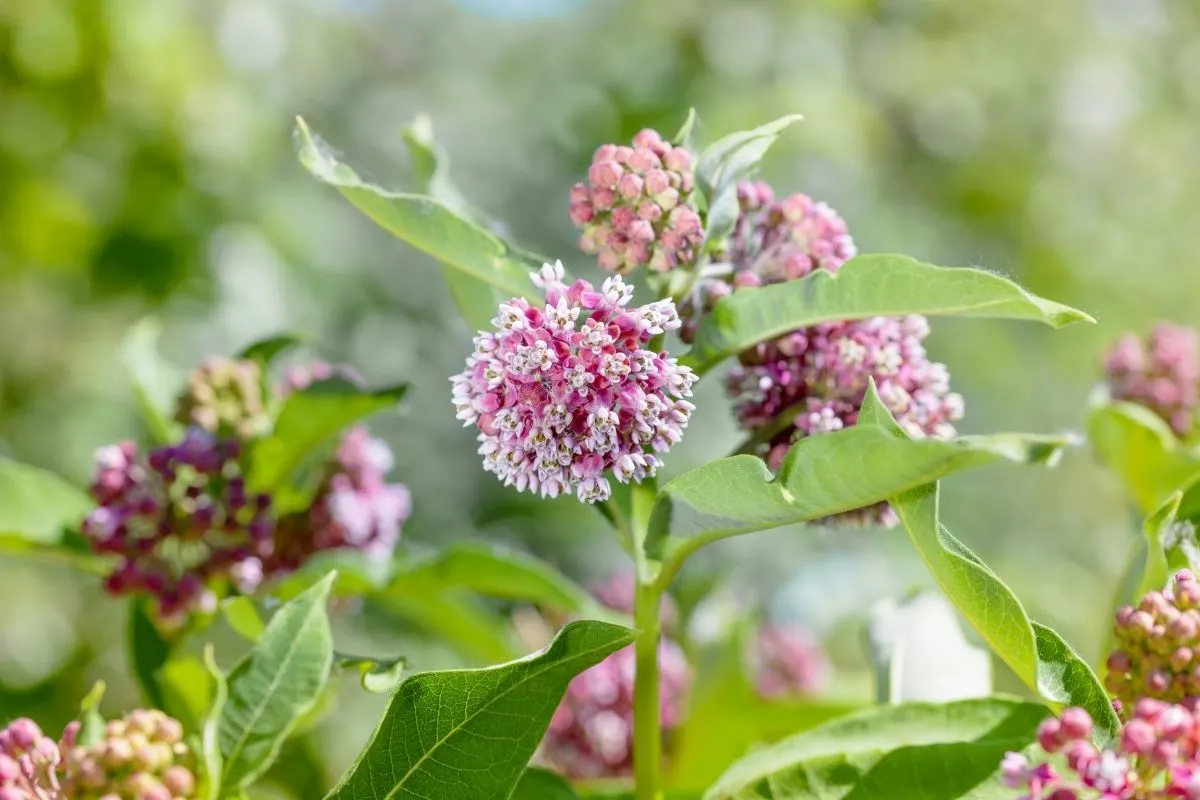
Clasping milkweed is one of several milkweed types that are native to Rhode Island. It is also called blunt leaf milkweed. It grows 80 to 100 cm tall and has unique pink, green, or purple flowers.
Blooming from May to August, clasping milkweed is the preferred food source for Monarch butterfly caterpillars. It will look stunning in your garden and is easy to care for.
5. Poke milkweed (Asclepias exaltata)
Poke milkweed is a native milkweed that does best in the shade. In a natural environment, it would typically be found near wood areas or the opening to the woodlands. In your landscape, it will need partial shade to full shade, and medium to wet soil. It can grow up to five feet tall and blooms the white flowers from June through July.
6. Purple milkweed (Asclepias purpurascens)
Another of several milkweed varieties native to Rhode Island, purple milkweed has purple blooms, also attracts bees and butterflies (as well as other pollinators), and has very distinctive-looking flowers.
It’s easy to care for and will usually bloom from June to August. It grows from 2 to 3 feet tall, likes full sun, and dry to medium watering.
7. Yellow wild indigo (Baptisia tinctoria)
Yellow wild indigo is a shrubby perennial, and it will usually grow wider than it does tall. It’s on the smaller end of the common baptisias but it can do very well in flower beds or a native landscape.
the yellow wild indigo likes full sun to partial shade, dry to medium soil, and has a taproot. It’s a beautiful yellow bloom that appears from May to June.
8. Pink corydalis (Capnoides sempervirens)
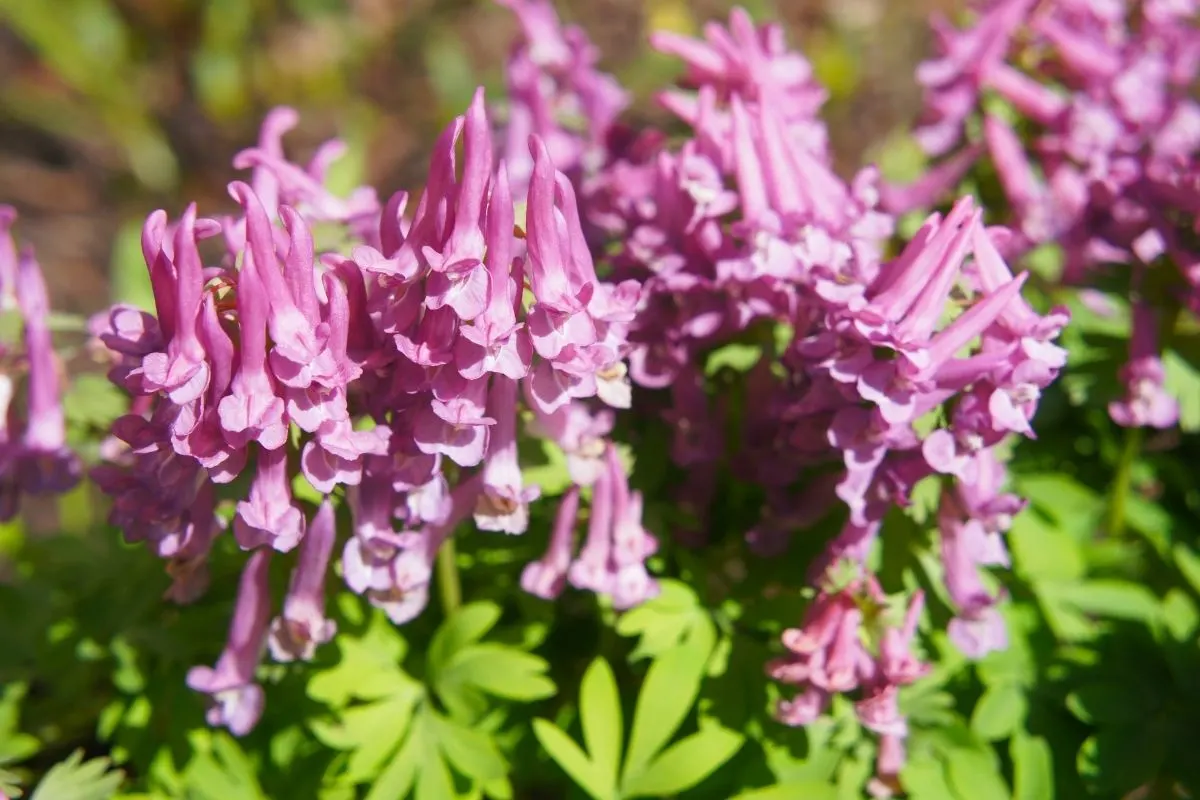
Pink corydalis is also called rock harlequin. It is a very showy, delicate-looking, unique flowering biennial.
It grows from 1-2 feet tall and has compound leaves that divide into many lobes. The blooms are pink, yellow, and purple and bloom from May to September. It likes dry acidic soil and part shade. Too much sun can burn the plant.
9. Maryland golden aster (Chrysopsis mariana)
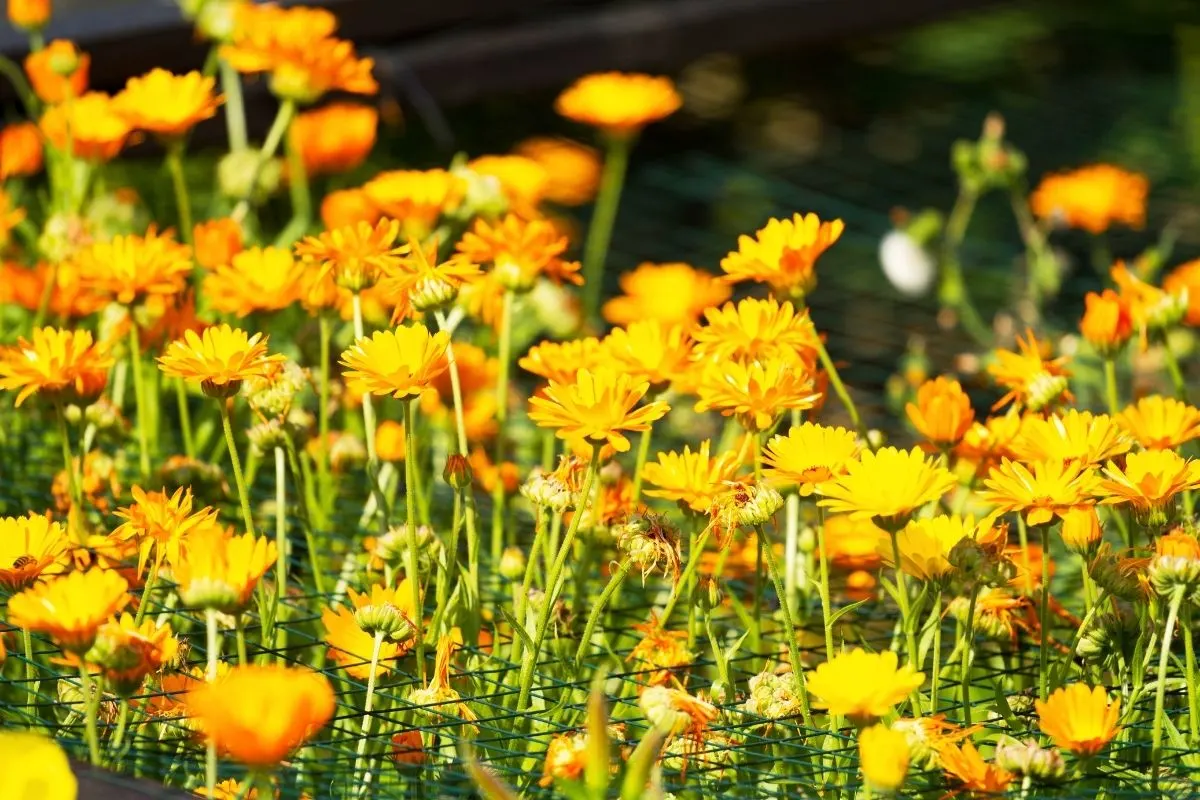
This golden member of the aster family is a great choice to brighten up your garden or landscape. In nature, it likes pine woods and sandy areas. It will bloom the yellow flowers from August to October, making it a late-season bloomer. It likes wet to moist soils and full sun to do its best.
10. Yellow blue-bead lily (Clintonia borealis)
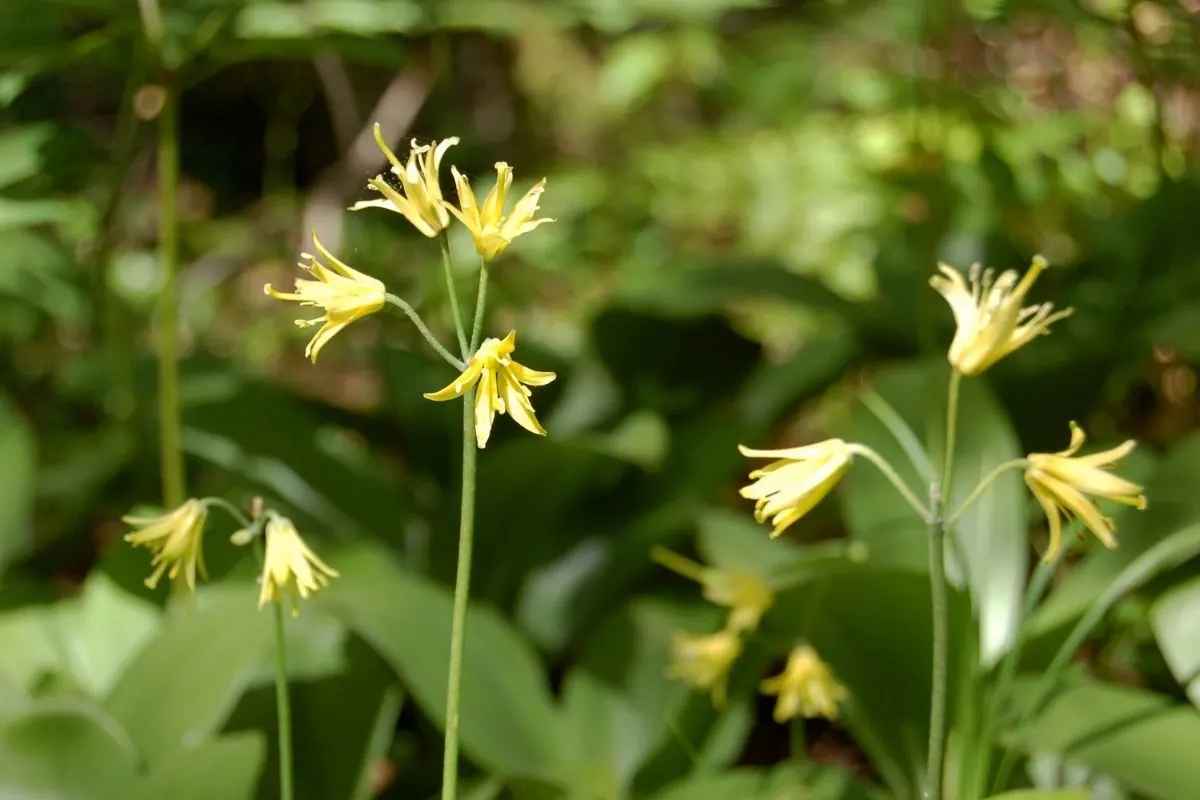
Yellow blue-bead lily is another native plant from the lily family. It’s sometimes also called bluebead, clintonia, or blue-bead lily. The leafless stem grows from 8-15 inches tall. It likes shade and can burn in direct sun.
It also likes moist, acidic soil. It will attract birds and butterflies. If the summer temps regularly go high above 75 degrees, it can be difficult to grow.
11. Purple wood aster (Eurybia spectabilis)
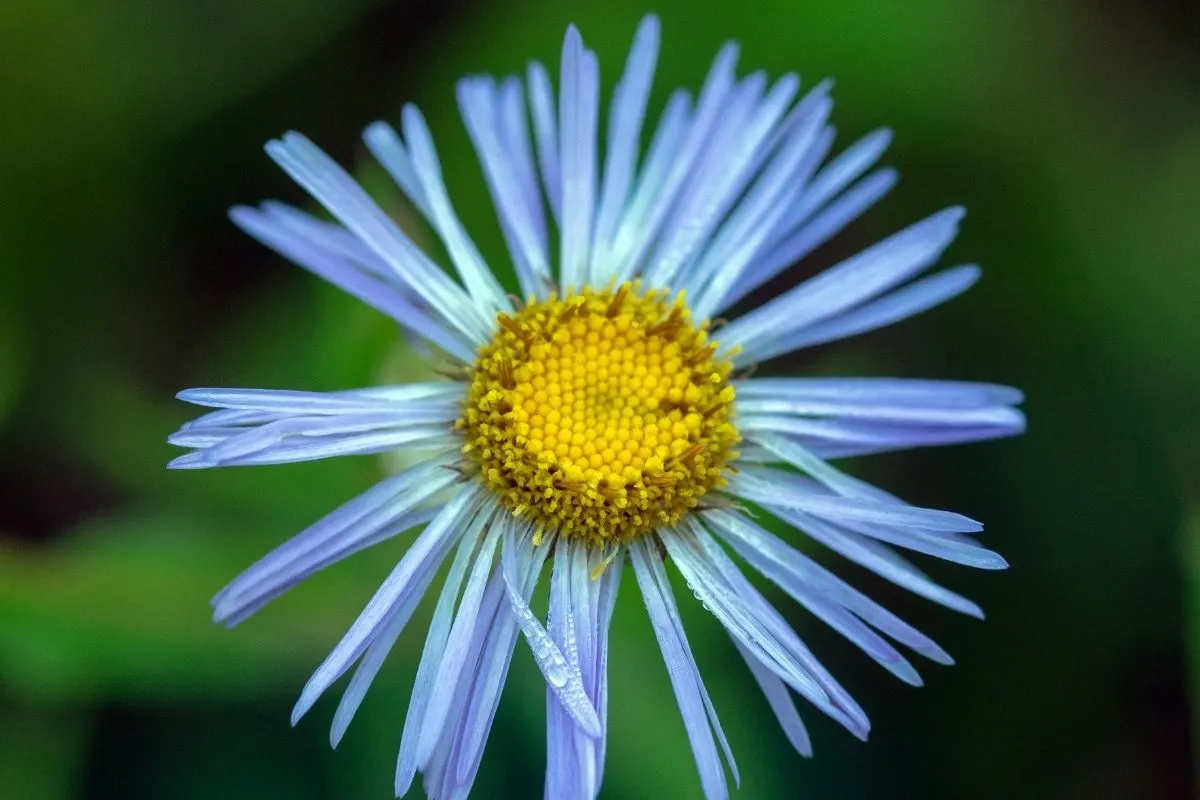
Purple wood aster is one of many asters that are native to the state. It has a very distinctive, showy purple flower that can grow up to 2 inches in diameter. It is commonly known as eastern showy aster or just showy aster. It’s most often found in coastal areas in dry, sandy soils.
The beautiful flowers of this aster will make a statement in your garden or landscape.
12. Common star grass (Hypoxis hirsuta)
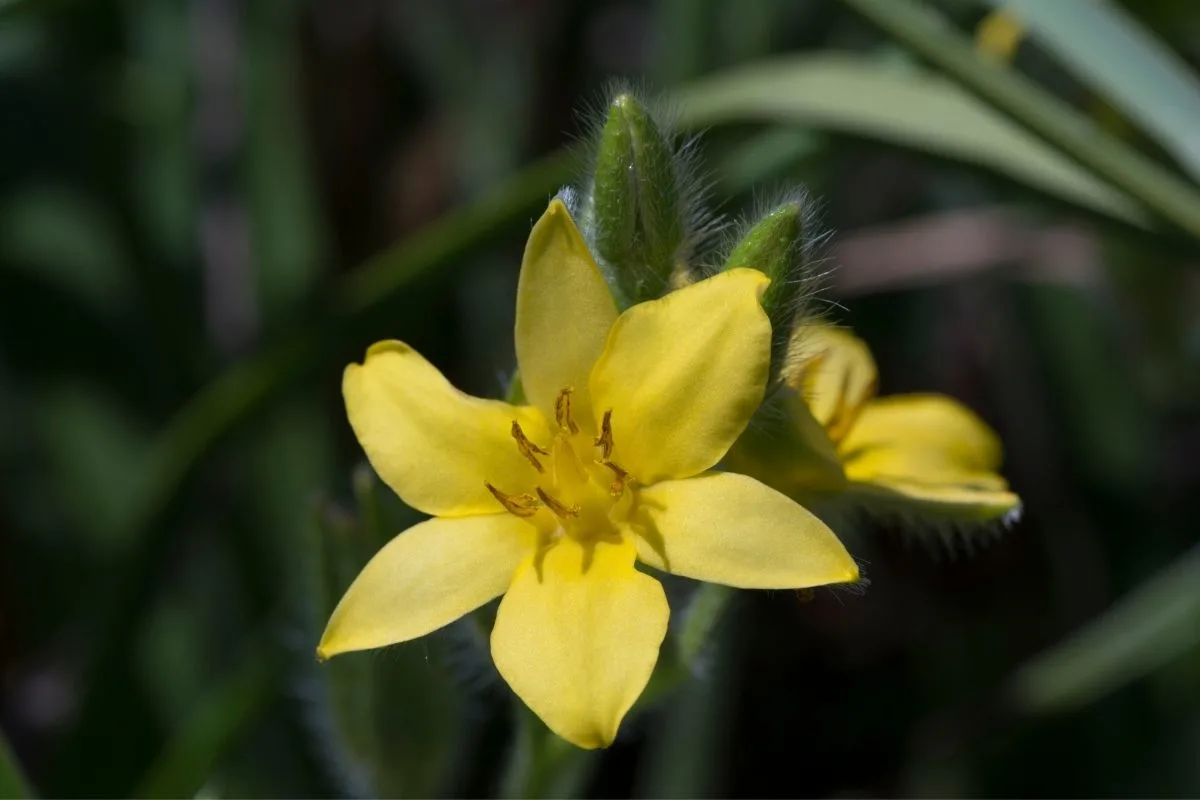
This plant is also called common goldstar, yellow star grass, and eastern yellow star grass. It’s part of the lily family, which you can tell from the shape of the small, yellow flowers.
It grows from three to eight inches tall and is sometimes confused with grass when the flowers are not in bloom. It blooms from March to June, is easy to care for, and also makes a good ground cover. It will attract bees and butterflies.
13. Blue iris (Iris versicolor)
Blue iris is one of a couple of iris varieties that are native to Rhode Island. It has other common names to include the harlequin blue flag, northern blue flag, and large blue iris. It’s similar to the garden iris and has showy violet-blue flowers that bloom at the top of the stalks at two to three feet tall.
It likes full sun to part shade and moist to wet, acidic soil. It’s very beneficial to hummingbirds and will attract them to your garden if you enjoy watching.
14. Cardinal flower (Lobelia cardinalis var. cardinalis)
Cardinal flower is a showy, striking bloom that loves wetlands. It blooms late in summer and does best natively in marshes or the shore areas. It grows from 1 to 6 feet tall and has dark green leaves.
The cardinal flower likes full sun to part shade and can tolerate full shade if other conditions are met. It likes moist to wet soil and is cold tolerant and heat tolerant.
This plant is beautiful to look at and also very tolerant of varying temperatures and weather conditions in Rhode Island.
15. Violet wood-sorrel (Oxalis violacea)
This erect, delicate plant can grow up to 16 inches tall. It has long-stemmed leaves that grow starting from the base and are divided into three leaflets. It’s a very common woodland and prairie species that likes moist areas.
The wood sorrel spreads rapidly and is low maintenance once established in your landscape. Four to nineteen flowers will grow at the end of the long stem. They range in color from shades of pink to purple and lavender.
16. Bloodroot (Sanguinaria canadensis)
Bloodroot is the final native perennial on our list, but it’s certainly not the last. It’s part of the poppy family and the white petals with a yellow center have a very delicate and distinct look that will brighten any space in your landscape.
It’s a delicate spring flower that only grows about 6-10 inches tall. It likes moist to wet soil, part to full shade, and can spread rapidly and make a good ground cover.
If you’d like to learn about more native plants or search specifically by type, exposure, moisture, size, or other factors, you can use this tool here.
Next, let’s take a look at some commonly asked questions about these native plants.
Rhode Island native plants list FAQ
Here are some questions people sometimes ask about native plants in Rhode Island.
Where can I buy native plants?
There are actually many great places you can buy native plants or starter seeds for your native garden. You can search local native nurseries, The Native Plant Trust (from the New England Wild Flower Society), the Rhode Island Wild Plant Society, and local community plant groups and nature conservation groups.
What are some native trees?
Some trees that are native to Rhode Island include hickory, ash, elm, maple, cherry, beech, birch, poplar, pine, and cedar.
What is the state flower of Rhode Island?
The state flower of Rhode Island is the common blue violet (viola sororia). It officially became the state flower in 1968 but local school children had named it as a preference for a state flower since back in 1897.
How do I choose the right plants for my native garden?
If you’re unsure how to choose the right plant for your native garden, you can do some research first. The University of Rhode Island has a guide to help select the right native plant for your landscape. You can also speak to native nurseries or conservatories in your area.
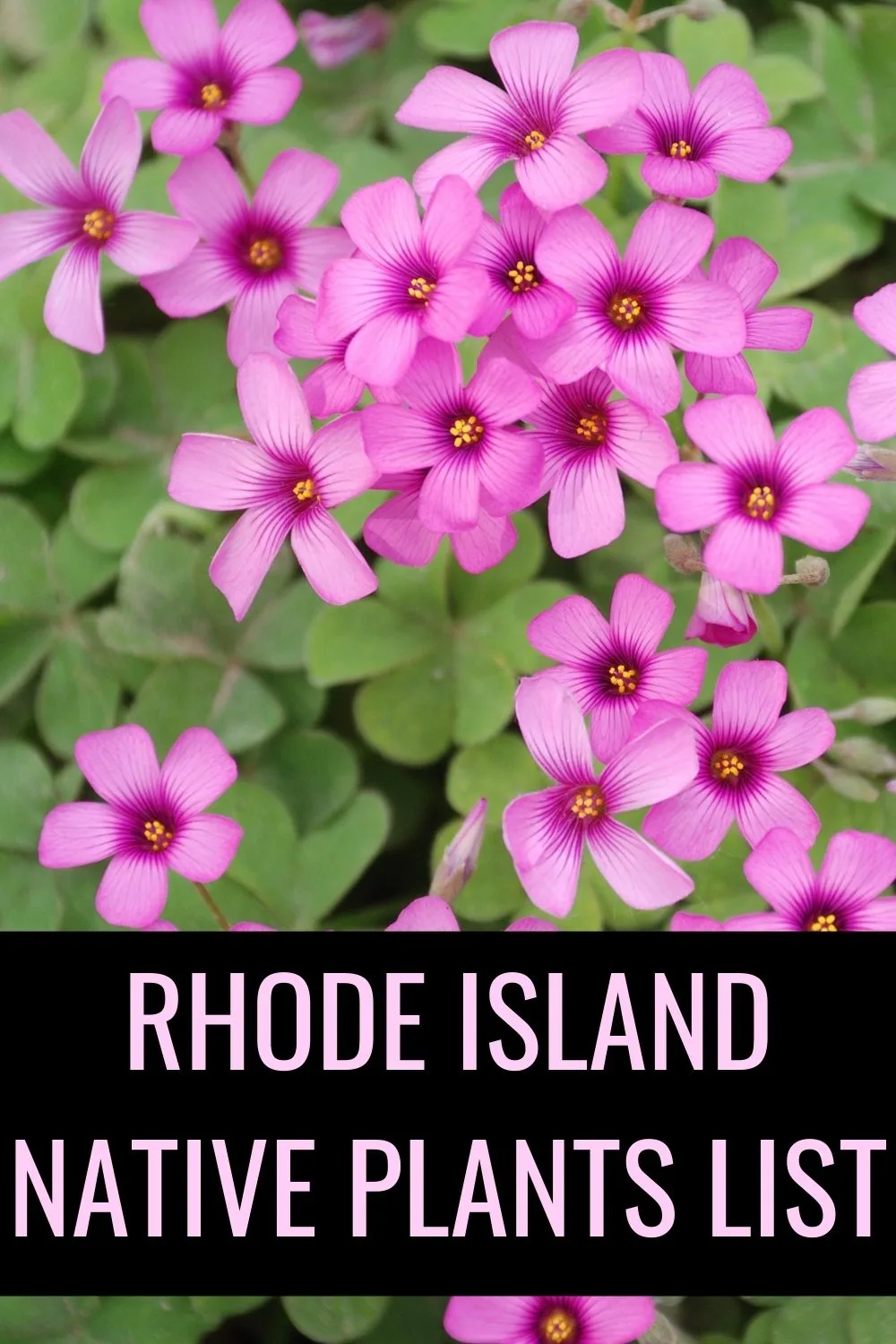
Lisa Clark is a freelance writer who grew up on farmland, then moved to the city, and has now retired back to her rural roots. She's having fun teaching her kids about gardening, planting flowers, and collecting houseplants.


